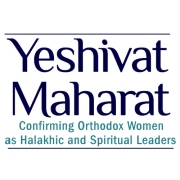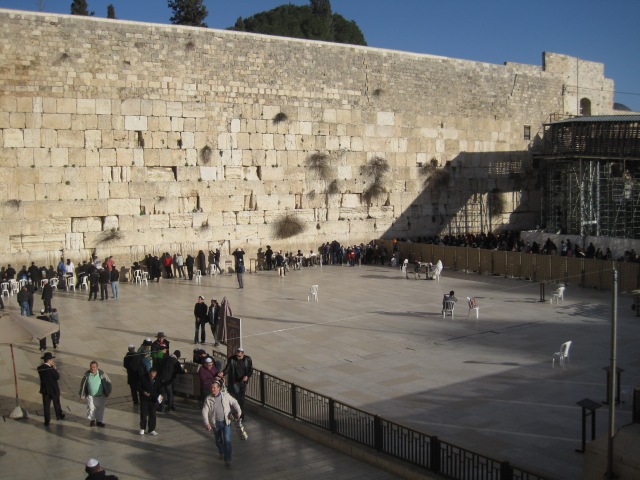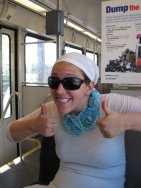You may have noticed the serious lack of posts from me over the past few months, and well, there is in fact a reason: I’ve been getting to and thus inevitably through shloshim. What follows is a bit of a recount of the past few months, more for myself than anyone else, but on the off chance anyone else can get solace from it now or in the future, I’m going to post it.

Post by Melissa – In memory of her beloved mommie, Joanne (Yocheved bat Yisrael v’Esther)
May was just a busy month, and then I got excited about the Israeli Presidential Conference and anticipated multiple posts afterwards. Unfortunately, right at that time (early June), I got the initial news that my mother, my best friend, and one of the most healthy and stoic women I know had become suddenly ill enough that she’d made multiple trips to the doctor, urgent care, and ER. That threw me for quite a loop. Then I started my summer learning and attempting to balance that, working, and dealing with the various life in Israel tasks at hand, and wishing I was in CA with my parents I didn’t have much time left for blogging – and amidst all that I got two more pieces of news (1) I was pregnant (still am, Thank God) and (2) my mom had a rare cancer. As time progressed they decided it wasn’t what they thought it was, it was maybe one of two other cancers, and then in early August (the same day as my 8 week ultrasound) my beloved mommie found out that she in fact had Stage 4 Metastatic Sarcomatoid Carcinoma, as identified by the National Cancer Institute. She was told there was no good treatment options as anything would cause more pain (this was also verified by a second opinion), that she would not recover from her paralysis (waist down), and that she should enjoy the next 6-12 months with her family while receiving hospice care to reduce the pain.
I spoke to her on the phone that day (Wednesday in America) and she was optimistic about enjoying this time and she and my dad told me about the various things in the works in order to make her life as good as possible for these last months. I called home a few times over the next few days and heard as her voice began to give out as the disease spread to her throat. I called home on Monday night, and she could only eek out a few phrases, but I did get a clear “I love you” and I’m so grateful for that, as it was one of (if not the) last thing/s she said.
Amidst all of this, we had booked a ticket for me to go out (my brother who was in TX at the time had been out already) in mid-August, however after the diagnosis, she began to deteriorate very quickly so we moved it up. A week after being told she was terminal and two days after I spoke with her for the last time, D and I arrived in CA to find her semi-comatose, not speaking, eyes closed, and finally accepting pain medication. I spent the last few days of her life by her bedside giving her her meds, holding her hand, and talking to her – alongside family and friends.
At Shabbat dinner, we said Kiddush and sang Shir Ha’maalot by her bedside as well, knowing those were things she always liked to participate in. I think in time, it will bring me some comfort that those were among the last sounds she heard, as she died roughly four hours later.
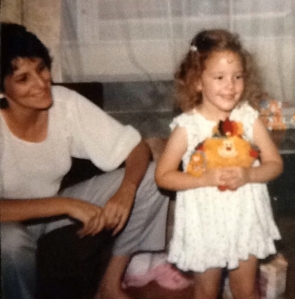
Birthday! (10/198?)
Two days later I stood amongst a large group of family and friends as we reminisced about her amazing life and shoveled dirt into her grave. For the week of shiva, my father, brother, and I were hardly ever alone. There was a constant stream of people visiting the house. However, I often found myself needing to get away from the crowd and hiding out in “my room” (not the room I ever actually lived in, but the room which possessed a few of my belongings over the years and where I stayed when I visited, though it now posses all of our books while we live in Israel). I leaned heavily upon a few friends who welcomed me into the dead parents society via email and in person to help me attempt to deal with this new reality I had no desire to engage in.
On Sunday morning when we walked around the block, my dad and I huddled together and cried. After everyone left, we looked at each other in awe — what did we do now? We tried to move on. Our worlds had been completely flipped upside down and we didnt really know what to do with ourselves. He did the mundane post-death tasks, and I stayed home and and tried to help do some stuff around the house. I couldn’t read, learn, or communicate with most people. I couldn’t clear my head or wrap my head around my new reality. Sitting at the house and watching TV, I waited for her commentary. My dad would do silly things and I expected her reactions. I kept waiting for her to walk in the door from work. By none of that happened. The hole in my heart remained wide open.
After a week, D and I came back to Israel and I had a new task: how to reintegrate into society and community when I was a fundamentally different person. Classes started right away, I had to put on a happy face, engage the new students, and reintegrate into my daily learning. I was completely overwhelmed by being in a communal space and forcing myself to “fake it til I make it.” Every time I walked out of my apartment, I knew I would have to face other people, and had a small panic attack.
The it was the chagim, and Rosh Hashana interrupted my shloshim a few days early. I couldn’t handle being in public still and only prayed in the minyan in the evenings, and we had small meals with friends. The liturgy was also particularly challenging, all the “who shall live and who shall die” stuff is pretty harsh when death is in the forefront of your mind.
Throughout those thirty days my dad and I spoke very often, both trying to figure out what life without “our person” looked like. For both of us, my mom was our best friend, our confidant, our go-to for life’s good and bad, she was our rock – having the person who is all of those things ripped from your life leaves you gasping for breath and unsure of your footing. But we both made it through, and are trying to take deep breaths and put one foot in front of each other, cherishing the days that are good and riding out the days that are bad.

Bat Mitzvah Weekend (07/1995)
I’m now another month later and I still don’t know how I actually make it through each day. I hope every night I will sleep and wake up at a normal hour, but often I wake up and cry in the middle of the night. I hope every day I will make it through the day without breaking down, but I often find myself very emotional. I say Kaddish at mincha daily, and sometimes I am able to say it all, and other days I lose my words and add to the tear stains on the pages of my siddur.
I tried to ignore my birthday recently because she always told me it was one of her favorite days of the year. I’m trying to ignore friends’ discussions of Halloween because it was her favorite holiday. I am unable to find words to write, despite people constantly encouraging me to do just that. I find myself drifting between activities, classes, and meetings trying to ignore the thoughts in my head. I periodically over schedule myself just so I don’t have to think, but then I can’t function the next day because thats simply not how I work. And every time I cry, I hear her words in my head “don’t cry baby, its just going to give you a headache and its not going to make anything better” – and she is so right.
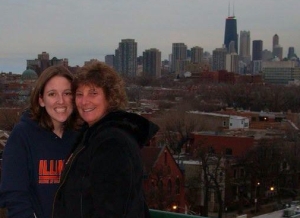
MSW Graduation (12/2006)
One of my rabbis said to me recently that I am a human experiment, by experiencing both mourning and pregnancy simultaneously. My belated reaction is that I did not sign the consent form for this experiment and I want out. (Too bad it’s not an IRB approved study where that’s an option, huh?)
My mommie was my number one fan. I know she was so proud of all of my accomplishments thus far and only believed in the best for my future, so I’m going to do my best to be the woman she saw in me and to carry on some of her warmth, kindness, compassion, and generosity into my life. I know that her spirit lives in me and her smile shines out through mine.

Wedding Day (06/2009)
That said, this blog remains an important part of my life, but I will likely remain fairly silent on the blog for the rest of this year. I imagine there will be experiences which I will want to write about, but my primary focus needs to be on my personal journey through aveilut and pregnancy. (Which end in Elul/September and Adar II/March respectively.)
I appreciate all of the support and understanding which I know you will offer.
(I also apologize for any grammatical errors or typos, I’ve written this post in countless spurts and I just can’t proofread it.)







